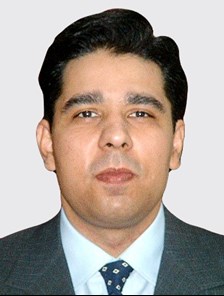In recent years, the Centers for Medicare & Medicaid Services has maintained the general structure of the model Annual Notice of Change (ANOC) and Evidence of Coverage (EOC) documents, making only relatively minor changes. However, this May, CMS published the Annual Enrollment Period (AEP) 2023 model documents, and the changes are anything but minor.
The Center for Medicare & Medicaid Services (CMS), the federal body that regulates and administers the Medicare and Medicaid programs, releases updates to the Annual Notice of Change (ANOC) and Evidence of Coverage (EOC) model documents every year in late spring. Complex and elaborate, these model documents provide the content and layout guidelines for Medicare Advantage Organizations (MAOs) to create the required compliance and marketing communications for all their marketed plans. MAOs are required to have these communications ready for members before the start of the Annual Enrollment Period (AEP), which runs from October 15 to December 7 every year.
The ANOC and EOC provide vital information for potential and current plan beneficiaries, who can add to, change, or drop their MA or Medicare Part D plan coverage during the AEP. The CMS requires all MAOs and Part D sponsors to ensure all beneficiaries receive the newly updated, compliant, and accurate ANOCs and EOCs for their marketed plans well ahead of the AEP, so they have enough time to make informed decisions about their coverage for the upcoming year.
In recent years, CMS has maintained the general structure of the model ANOC and EOC documents, making only relatively minor changes. However, this May CMS published the AEP 2023 model documents, and the changes are anything but minor. Many MAOs were caught off guard and are now facing the most significant update process they’ve had in years.
These major changes are in themselves, a positive step toward making complex documents more recipient friendly. The Obama administration mandated that government communications need to be clear, concise, and readable. ANOCs and EOCs are contractual legal agreements, written at a grade 12 level: only a small minority of Americans read at level nine or higher. Simplifying the language level makes these important documents more approachable. Another factor in readability is length: complex EOCs can be up to 300 pages long, a daunting size for many.
The key changes in the CMS 2023 model documents include:
- Increased use of plain language, to make them simpler for beneficiaries to understand
- Elimination of duplicate language and specific tables, to help beneficiaries avoid confusion
- Removal of some interior Tables of Content, so beneficiaries can navigate the document more easily through a single, more detailed Table of Contents
- General reorganization focused on simplifying and shortening the document
- Reduction in the overall size and length by 15 percent-20 percent
For the 43 percent of Americans who have low literacy skills, these long-awaited adjustments are very welcome changes. Trimmed, simplified, and more consistent, the new concise ANOCs and EOCs will help beneficiaries make their Medicare and Medicaid choices with clarity and confidence in the upcoming AEP. But for MAOs with dozens of plans under management, these dramatic cuts and changes can pose serious logistical problems when it comes to building, proofing, translating, and printing the documents.
Recognizing the magnitude of the transformation, CMS released its model documents a few weeks early this year to give MAOs some extra time to incorporate the new modifications. However, the due date for these documents is still the same, which means MAOs must analyze and integrate the changes in a short period, in accordance with their CMS plan filings. Depending on their internal documentation process, some MAOs will find the update a laborious task.
Contingent on their choice of tool, their process requirements, current staffing levels, and vendor relationships, MAOs may not be adequately prepared to make all the necessary changes in time to meet CMS requirements. That’s true even if MAOs outsource the entire process: third-party service providers face all the same challenges and can put MAOs at risk of missing key deadlines.
The sheer size and scope of the latest CMS changes make it clear that many MAOs need to rethink how they create their CMS-mandated communications. A manual approach or a generic document automation platform is no longer enough; nor is it feasible to rely on third-party print providers. It’s time to look for a specialized, pre-configured solution that comes with all the features and perquisites MAOs need most. Automation is required, and the choice of technological tools will be critical.
Look for a purpose-built platform integrated with CMS Plan Benefit Package (PBP) data. The latest CMS model content and layout–with all the major changes—should be configured, with annual CMS model updates supported as part of every subscription. Choose a platform that offers a fully integrated quality assurance (QA) model which supports review and remediation and provides a trackable audit trail. Translation and accessibility should be built right in: Spanish content already configured, and plan document versions can be created in both regular and large print.
CMS has made major changes this year and there could be more changes expected in data and content in the coming years. It’s time to make your own changes–ease the load on your team, reduce your risk, and take back control of your AEP updates with smart automation.
Find out how Messagepoint can help you seamlessly accommodate large-scale updates to CMS model documents. Contact us for a demo.
 About the author
About the author
Sohail Malik is vice president, health care solutions with Messagepoint, overseeing the Messagepoint Healthcare Touchpoint Exchange solution to ensure the support of the complex and ever-changing needs of health plans to scale and grow to meet market needs.
He has more than 15 years experience in customer communications management and SaaS/Cloud-based digital transformation of highly regulated industries. Malik has worked with some of the largest national health care organizations, Blues and smaller community plans to bring digitalization and process automation for client communications and helped them scale and grow their business.
